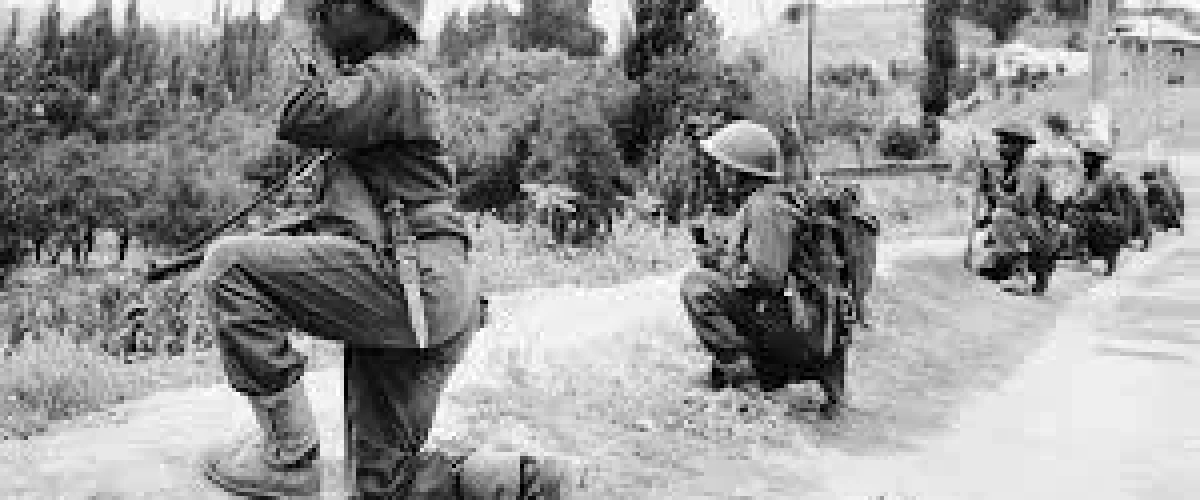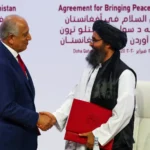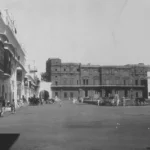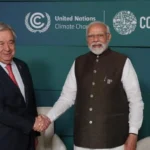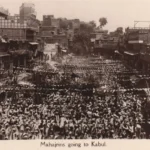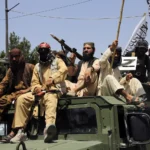Based on the thread initiated by Dr. Hassaan Bokhari (@shbokhari13), we are presenting the subject matter in its more expansive format. Enjoy reading!
The conventional narrative about Operation Searchlight goes like this: The mighty Pakistan Army started smashing the hapless Bengalis, who never stood a chance. This is pure fiction.
On March 25, 1971, when Yahya fled from Dhaka and left Generals Tikka Khan, Khadim Raja, and Rao Farman to “quell” the rebellion, the strength of the opposing forces was:
Bengalis: 4500 regulars in six East Bengal (EB) Regiment units plus 1500 in the East Bengal Regimental Center at Chittagong; 12–15000 East Pakistan Rifles (EPR); and 45000 police or Ansar (paramilitary). West Pakistani uniformed men numbered around 12,000 in total.
There was a reason Yahya had fled Dhaka before Op Searchlight’s launch. He knew that victory wasn’t assured. He also forbade starting action until his plane had safely reached Karachi (he feared that the Indians might shoot it down). Yahya’s departure from East Pakistan was going to be instantly known by the Awami League because of the presence of Bengali officers in the cantonment and at the airport. Wing Commander Khondkar informed the Awami League leadership as soon as Yahya reached the airport. This took away the element of surprise, which was crucial for the success of Operation Searchlight.
Let us now examine the respective plans of both parties. Both the army and the Awami League had anticipated a conflict ever since the election. Both sides had formulated plans that would be activated in the event of hostilities. On the evening of March 25, these plans were activated.
Awami League Plan: 1) Use the regulars of EB, EPR, Police, and Ansar to flush out the Pakistan Army. 2) Quickly gain control of Dhaka and Chittagong by subduing the numerically inferior Pakistani army troops, and if need be, 3) sustain a war with weapon supplies from India.
Poor training and coordination proved to be the major drawbacks.
The Pakistan Army Plan: 1) Act quickly with shock force; 2) arrest Awami League leadership; 3) disarm Bengali units; 4) seal off borders; 5) control all communications; 6) liquidate hardcore radical elements and Hindus.
Numerical inferiority was the Achilles’ heel.
Due to Yahya’s cowardice, the Awami League leadership got advance notice of the operation and went underground. Except for Mujib, no one at home was apprehended. It appears that he had decided to stay and be captured in order to negotiate with the Pakistani authorities from his jail cell. On the other hand, the others were to lead the armed struggle and seek India’s help. The two-faced strategy of Mujib, to keep all options open for as long as possible, continued even after the civil war started. Most likely, that is why he didn’t issue the prepared declaration of independence either. So, Bangladesh’s first declaration of independence was issued by Major Zia-ur-Rahman of the 8 EB Regiment from Chittagong on the night of March 25–26.
As it happened, the Awami League leadership proved woefully incompetent to lead the rebellion. Dhaka was brought under control by the Pakistani army without much bloodshed in a single night. According to Gen. Khadim Raja, the army only faced some resistance at the university, where some casualties were incurred. Later, tales were told about how the army “massacred thousands of students” at Dhaka University. Sharmila Bose has busted that particular myth by citing official Bangladeshi sources: “At “Shirishtola” in Dhaka University, there is a memorial to all those belonging to the university who lost their lives during 1971. The total, including all faculty, students, and staff killed during the whole of the year, is 149. Some of the faculty and students named were killed at other times and in other places, so the number of those who were killed on the night of March 25-26 at the university would be lower than 149 by the university’s own count.
But in contrast to Dhaka, there were fierce battles in some other places, most notably Chittagong. Wherever the former Pak army officers of the EB regiment were in charge (like Zia-ur-Rahman or Khaled Mosharraf), there were pitched battles. In Chittagong, initially, only about 600 West Pakistani soldiers of the 20 Baloch regiment faced about 5000 Bengali troops of the EB regiment and EPR. They managed to hold out, and some days later reinforcements from Comilla reached Chittagong, and Major Zia was forced to flee. From the beginning of April, reinforcements started reaching the beleaguered troops in East Pakistan. Two more infantry divisions were sent to join the truncated 14th Division, which had lost a significant portion of its strength due to the rebellion of Bengali troops. By the beginning of May, the Pakistan Army had evicted the rebels from all major towns and cities and had gained control of more than 80% of the countryside. This was a remarkable achievement in adverse circumstances.
From May to October, the battles continued, but Mukti Bahini (the rebels’ name for their army) failed to score any significant successes. Their much-touted monsoon offensive failed spectacularly in August and September.
Indian military involvement in the East Pakistan situation had begun with the Agartala conspiracy. Numerous Indian agents (especially among the Hindu population of East Pakistan) had kept the Indians well informed throughout the crisis months from December 1970 to March 1971. From March 25 on, the Indian Border Security Force (BSF) provided weapons and training to the Mukti Bahini. Occasionally, BSF troops participated in Mukti Bahini’s battles with the Pakistan Army. From May 1 onwards, this role was taken over by the Indian army. 59 training camps were established along the India-East Pakistan border, and more than 100,000 soldiers of the Mukti Bahini were trained. According to many sources, the Indian army itself became deeply involved in battles with the Pakistani army. Srinath Raghavan writes: “The Indian Army not only provided increased fire support to the Mukti Bahini but also embedded some of its own troops, especially the commando units, to fight alongside it.”
Looking back at the civil war, it is clear that the Indians used Mukti Bahini as cannon fodder. They wanted the war to be concluded within a year because they feared that the Bengali independence movement would transition from a pro-India Hindu-dominated movement led by their Awami League touts to a pro-communist/Maoist Muslim-dominated movement with the former Pakistan Army officers of the East Bengal regiment playing the leading role. While Awami Leaguers like Tajuddin had no issue with Indian hegemony, ex-army officers like Major Zia (who had earned a Sitara-e-Jurat against Indians in the 1965 war) were resentful of Indian heavy-handedness and racist or patronizing behavior. They hadn’t rebelled against Pakistan only to become slaves for India. Even within the Awami League, leaders like their foreign minister in exile, Khandekar Moshtaque, wanted a deal with Pakistan to escape Indian clutches and simultaneously liberate Bangladesh. Moshtaque even approached the US consulate in Calcutta at the end of July 1971 to explore the possibility of a political solution. This was the time when the rebels’ fortunes were at their lowest ebb. Thousands of Pakistani army soldiers and junior officers had given their lives to give Pakistan one last chance for an honorable political solution that could have preserved a symbolic link between West Pakistan and Bangladesh despite all the bloodshed. Sadly, the inebriated Yahya had no interest in such “trivial” matters. According to the Hamood-ur-Rahman Commission report, “the most favorable time for a political settlement was between the months of May and September 1971, during which a reasonable amount of normalcy had been restored and the authority of the government had been re-established at least in most of the urban areas, if not throughout the countryside.” However, no effort was made during these months to start a political dialogue with the elected representatives of the people of East Pakistan; instead, fraudulent and useless measures were adopted.
This window of opportunity closed in September when Moshtaque’s activities were detected by Indian intelligence, and he was duly sacked by D.P. Dhar’s orders, who was practically running the Bangladesh government in exile.
The casualties were heavy for both sides. According to former Indian Prime Minister Morarji Desai, approximately 5000 Indian soldiers were killed in East Pakistan prior to the November outbreak of war. Mukti Bahini lost about 15–20,000 rebels in these 8 months.
Pakistan Army losses are estimated in the range of 4000 (237 officers, 136 Junior Commissioned Officers, and 3559 other ranks). This number reflects an incredible casualty rate of 10%! (The total strength of the Pakistani army in East Pakistan was three incomplete divisions and was in the range of 40,000 total troops.) In addition to it, the pro-Pakistan Bengali paramilitaries like the Al-Badr, Al-Shams, and Razakars suffered thousands of casualties as well.
In the end, let us briefly discuss the refugee issue.
India did a lot of propaganda by highlighting the refugee issue. India lamented that 10 million refugees had come from East Pakistan and that they were an intolerable economic burden, etc. India demanded that Pakistan was trying to bankrupt India through refugees and that India would even go to war if the global community wouldn’t line up behind it to punish Pakistan and send back the refugees!
Seen objectively, the refugee issue was primarily just an excuse for India to launch a pre-planned war of aggression against Pakistan at the opportune moment. India wanted to weaken the Pakistan Army (and also the Mukti Bahini) through civil war first so that it could trample East Pakistan easily later in favorable weather during the winter.
Most of the refugees were Hindus, who were both more targeted by the Pakistani army and more susceptible to the Indian radio’s urging them to flee and seek refuge in India. According to Sisson and Rose, “Official Indian statements on the refugees played down the religious composition of the refugee population, which after the first outflow of Muslim Awami League supporters consisted overwhelmingly (an estimated 80 percent) of Bengali Hindus.” Indian officials never gave the United Nations access to the refugee camps. Most refugee camps also served as recruitment camps for the Mukti Bahini. Most of the other refugees were kept in inhumane conditions and were dying to go back, especially after Pakistan’s declaration of amnesty some months into the war. India badly wanted to shield these facts from the UN. India didn’t even want the UN to count the refugees, as that would have exploded the myth of 10 million refugees.
Srinath Raghavan mentions in his book “1971: A Global History of the Creation of Bangladesh”: Sadruddin (Sadruddin Aga Khan, the UN High Commissioner for Refugees) said that India’s refusal to station UNHCR personnel in the camps reflected its “desire [to] protect cross-border infiltration from international view.” According to him, not only was India seeking to shield its support for the Bengali rebels, but India’s stand on the refugees was inconsistent. “On the one hand, India complains about the presence of six million refugees and insists they must return, and on the other hand, it imposes conditions (negotiations with Mujib, etc.) for their return.” India also reacted negatively to the UN secretary general’s suggestion of a mutual withdrawal of Indian and Pakistani military forces from their respective borders and the posting of a team of U.N. observers on each side of the border. Pakistan, on the other hand, gave access to the UN at all the refugee receiving centers (established near the border to welcome back the returning refugees) and accepted the UN Secretary General’s suggestion of a mutual withdrawal.
This behavior from both sides made sense as Pakistan (being in a very precarious situation) wanted to avoid war with India while India was bent on war to vivisect its chief adversary.
Read more
Myths and Realities: The “Genocide” in East Pakistan
Also See: Role of Muslim Bengal in the Pakistan Independence Movement

